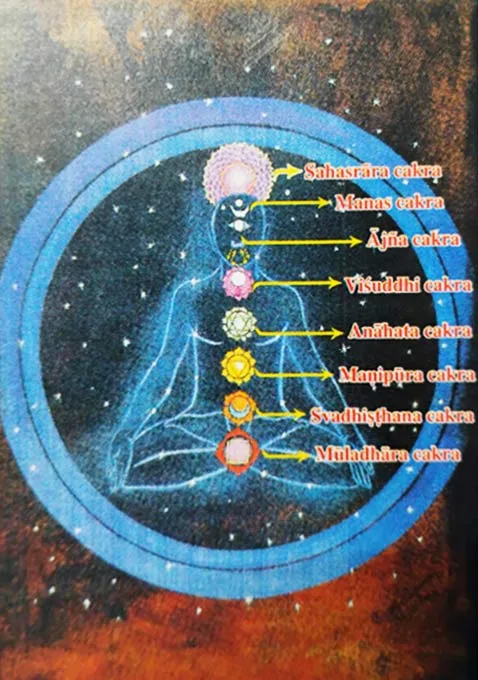Become a knower, inhale and exhale in such a subtle level that you yourself can’t feel the sound of respiration and even if a cotton swab is placed before your nose, it should not shake or quiver. By increasing practice slowly, try to inhale and exhale once in a minute. Thus, feel the breath inside. Initially the touch of breath will be felt only at the nose tip, but slowly you can feel the touch of breath deep inside.
In this way, by turning to a knower and chanting ‘omkara’, one starts involving into meditation automatically. The mind of the practitioner will become extremely focussed, absorbed in and identified with ‘omkara’. When as a knower (=soul) we concentrate on our mind with the rhythmic flow of breath, the praṇa gets subtle automatically and we inhale once in 10-20 seconds and exhale in 10-20 seconds. Through long practice a yogi is able to take one breath in one minute. It is also called ‘Vipasyana’ or ‘Prekṣādhyāna’ Prāṇāyāma; it is completely meditation-based.
In this way, by turning to a knower and chanting ‘omkara’, one starts involving into meditation automatically. The mind of the practitioner will become extremely focussed, absorbed in and identified with ‘omkara’. When as a knower (=soul) we concentrate on our mind with the rhythmic flow of breath, the praṇa gets subtle automatically and we inhale once in 10-20 seconds and exhale in 10-20 seconds. Through long practice a yogi is able to take one breath in one minute. It is also called ‘Vipasyana’ or ‘Prekṣādhyāna’ Prāṇāyāma; it is completely meditation-based.
Yoga sadhakas practising samadhi can do this Prāṇāyāma for hours depending on the availability of time. In this type of Pranayama there is no sound of breath, which means a soundless practice (sādhana) takes a person within, where his senses are merged in mind, mind in prāṇa, prāṇa in ātmā (=soul) and ātmā (= soul) in the paramātmā or viśvātmā (supreme soul).

Pranav Pranayama Benefits
- With this, the mind becomes extremely focussed and motionless. The practitioner’s (sādhaka) mind (citta) is absorbed in and identified with Omkara.
- A practitioner/seeker (Sadhaka) by meditation is identified with the saccidananda and thus attains the divine bliss of samadhi. Technically continuous practice of this Prāṇāyāma gives samyoga in dharaṇā, dhyāna and samadhi and samyoga attains samyama.
